Archive
2021
KubaParis
Terreno Invisível
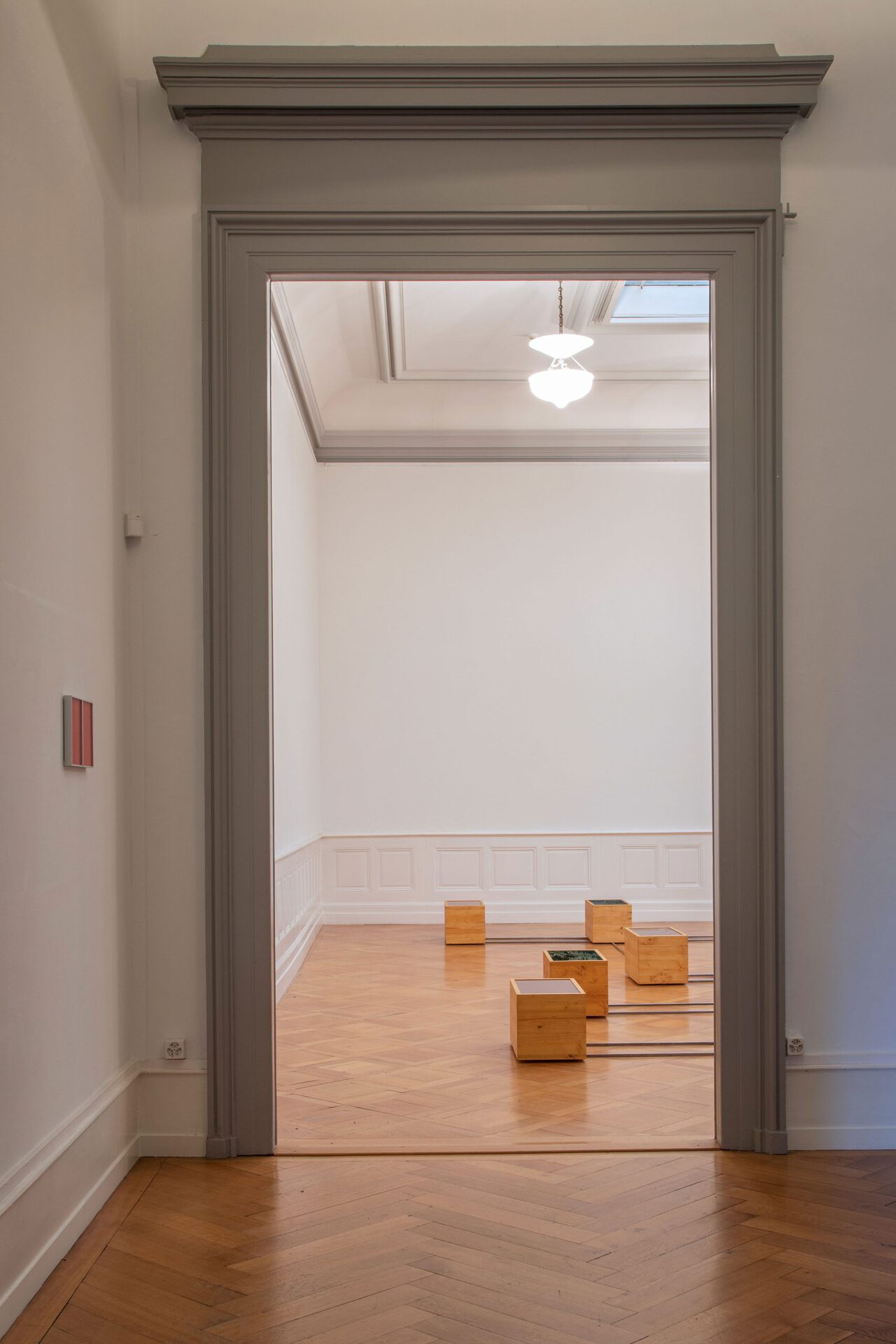
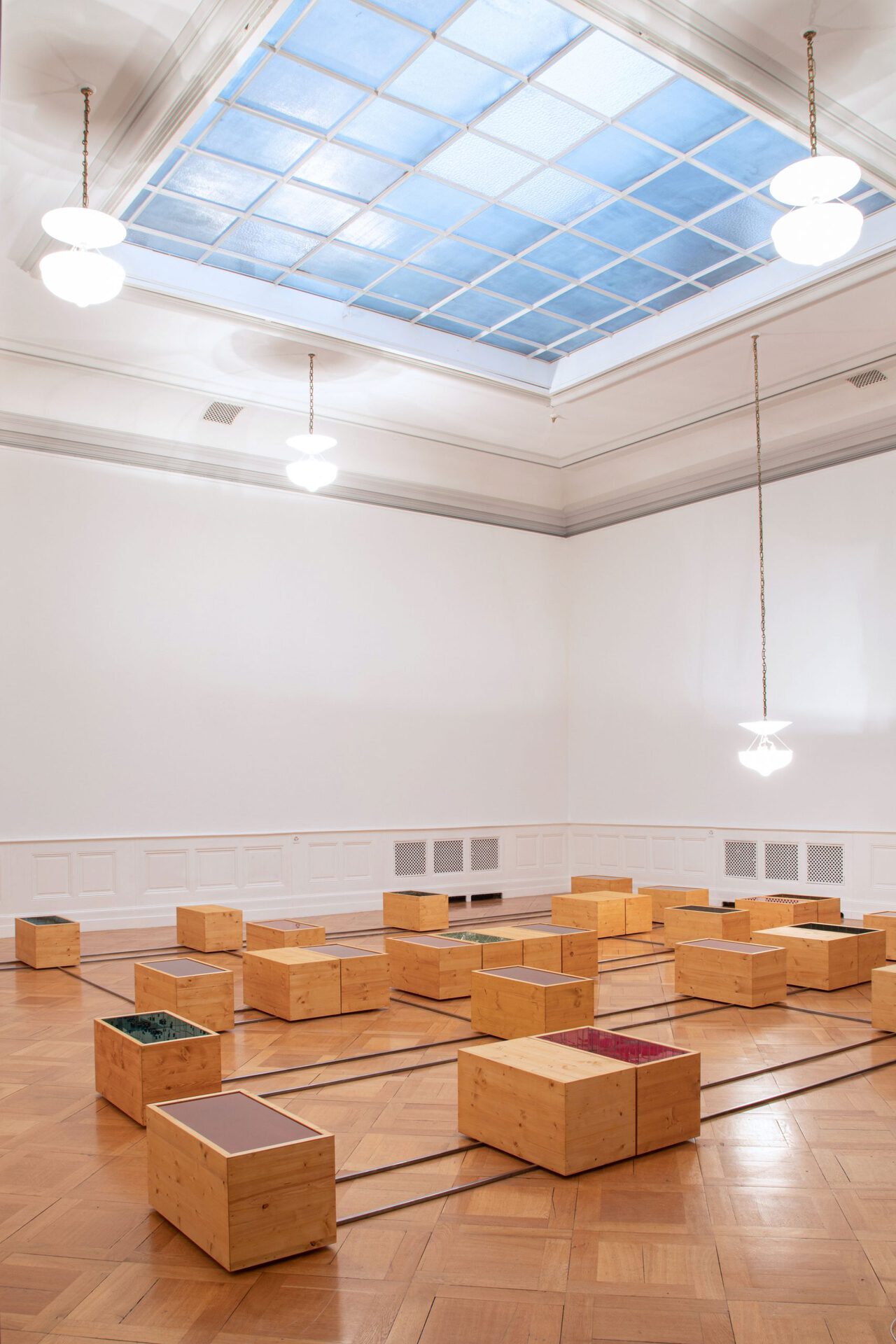
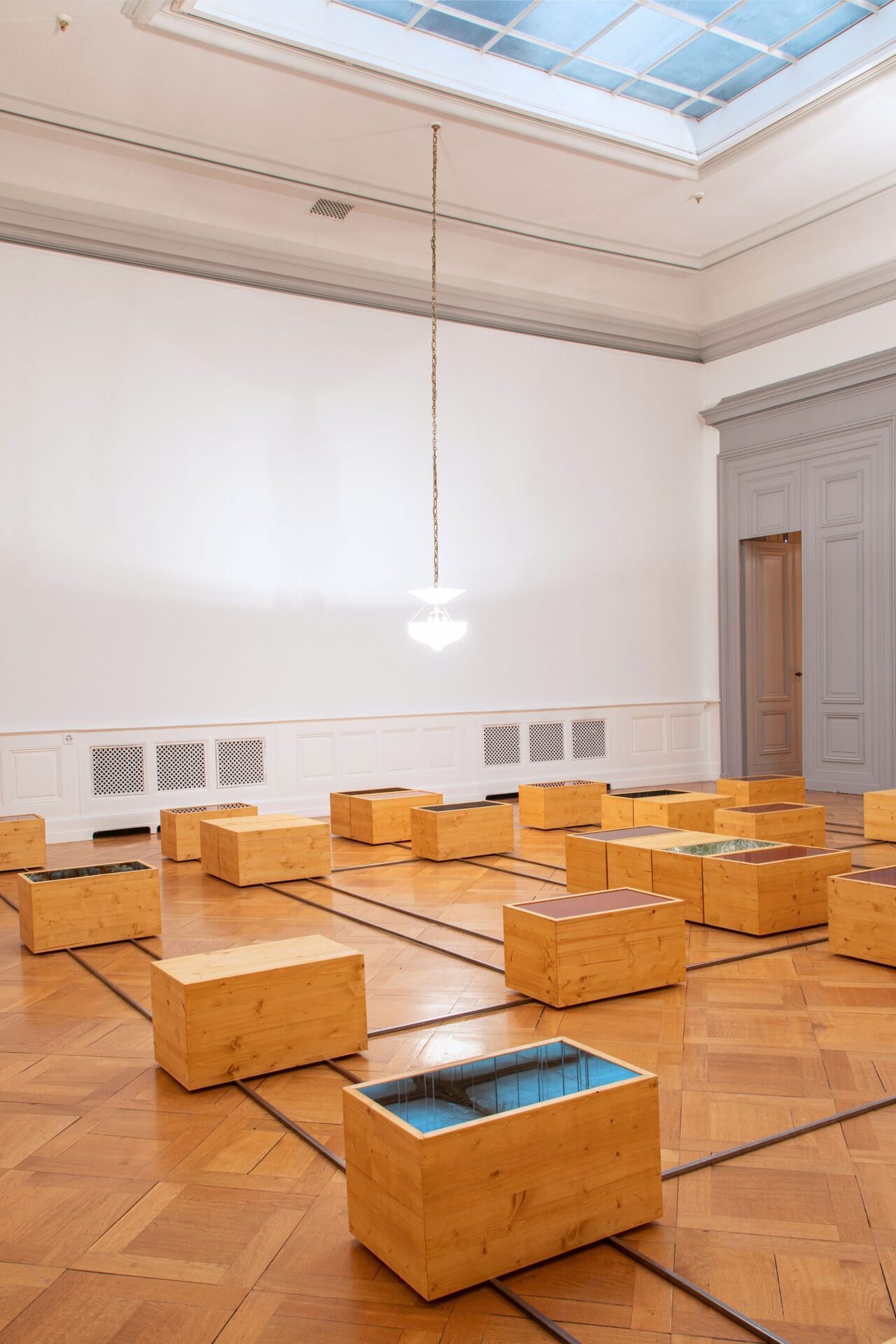


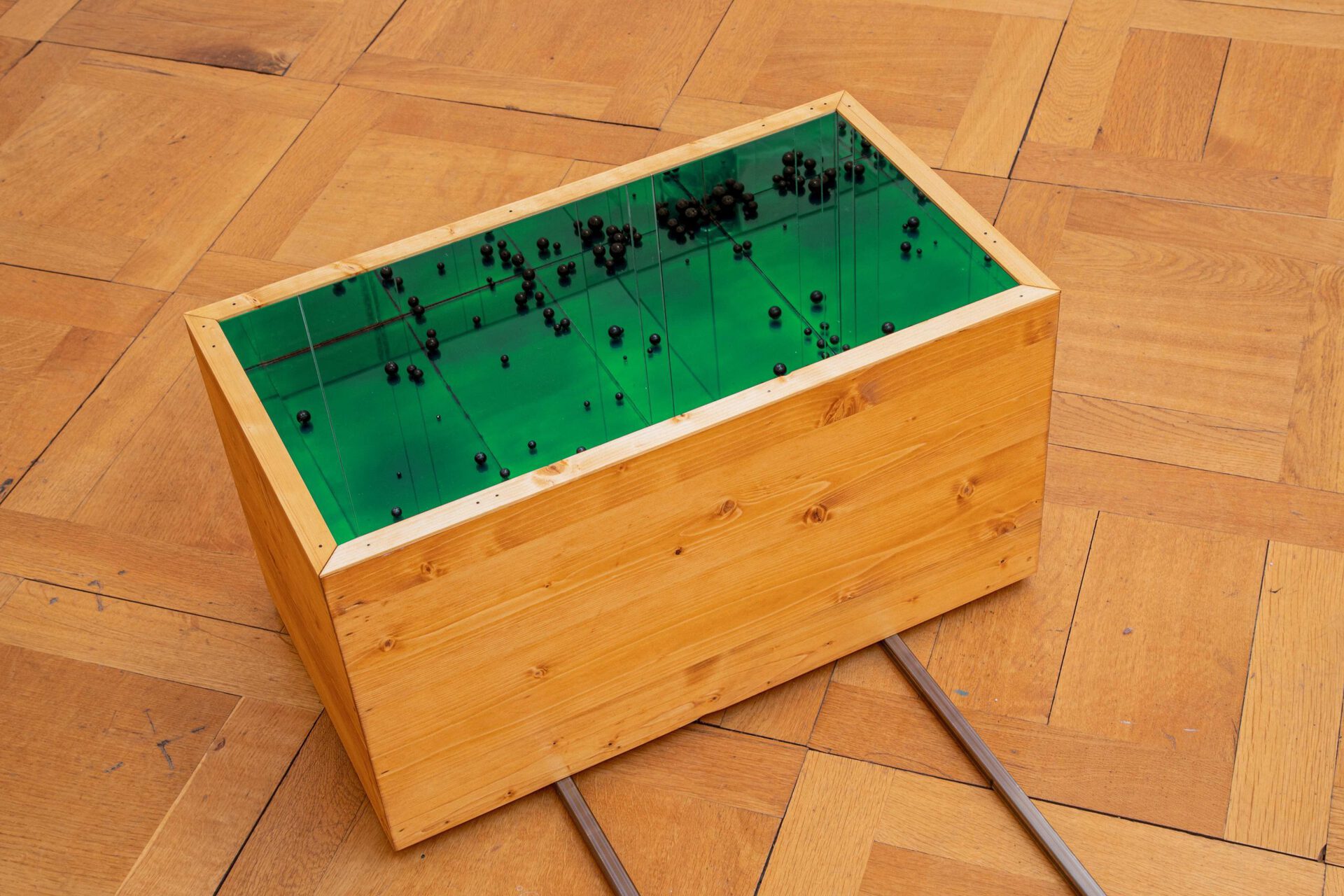
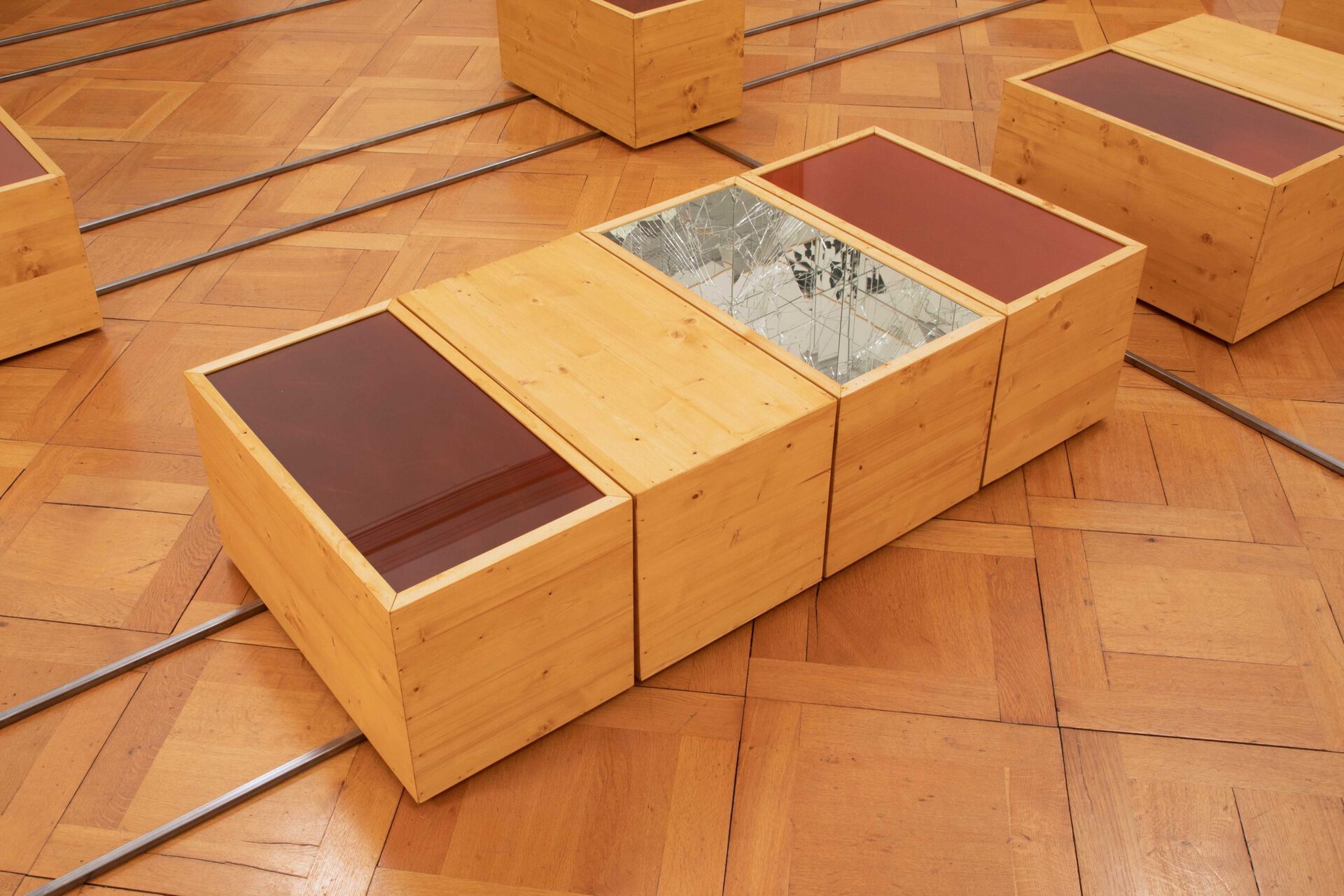

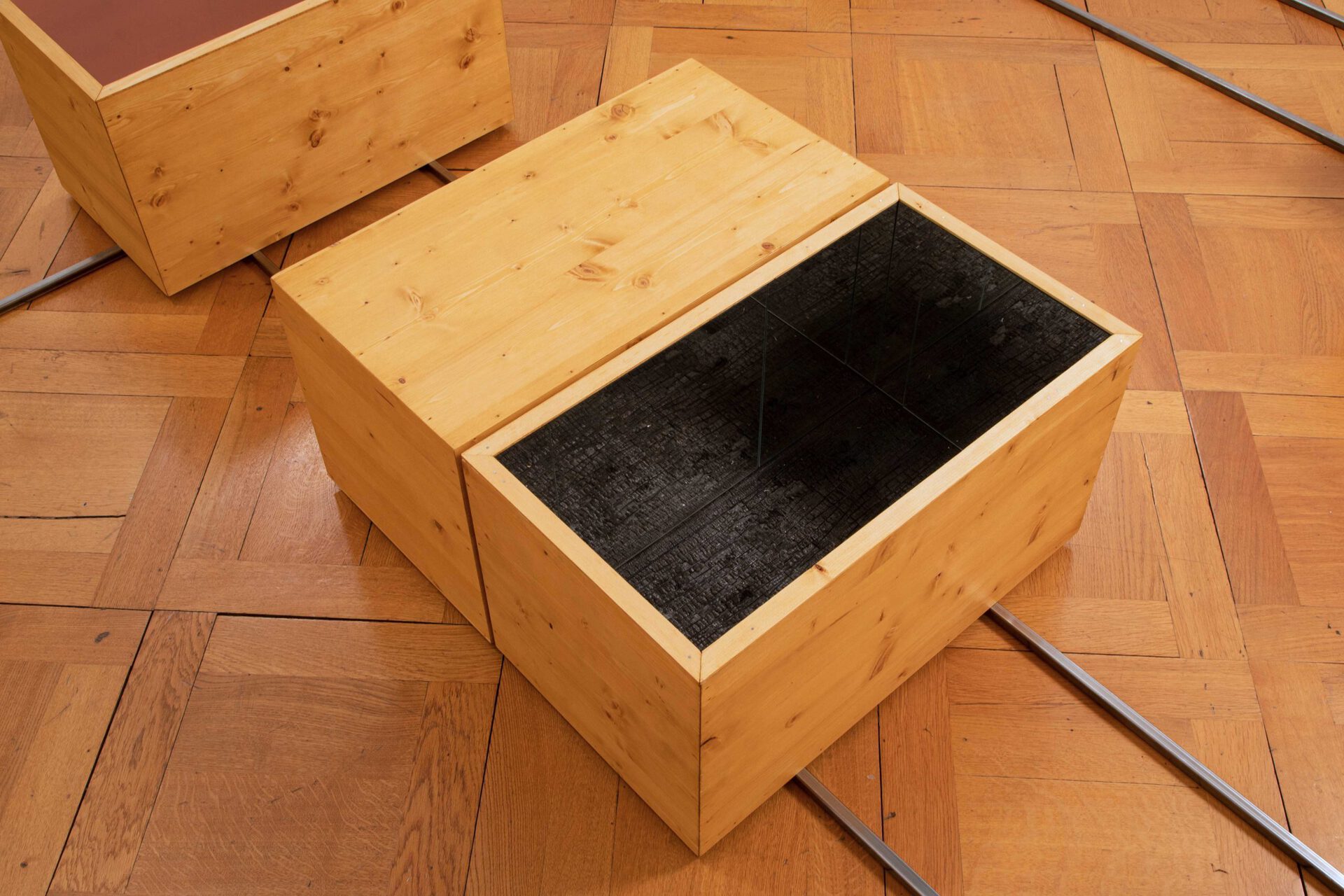
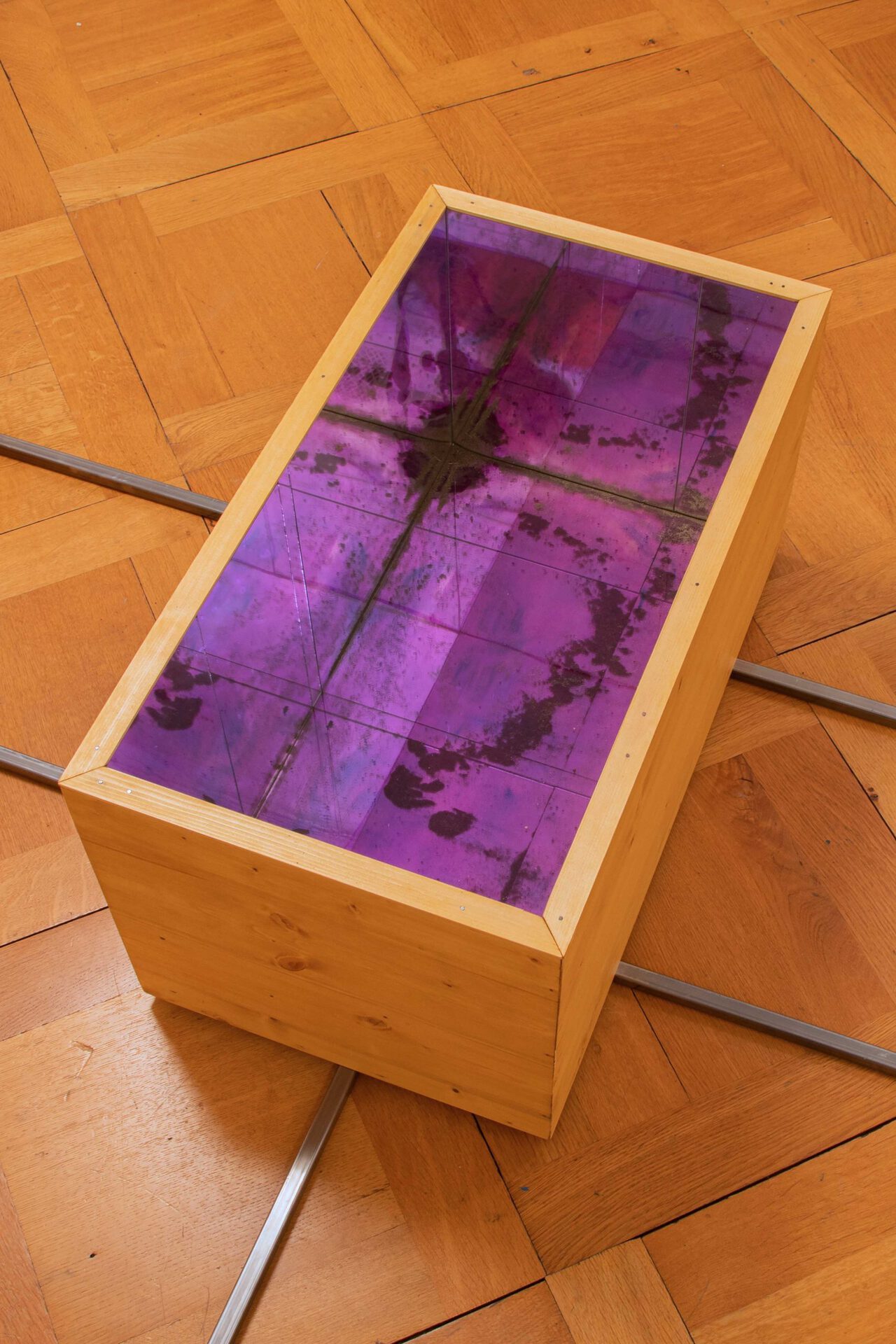
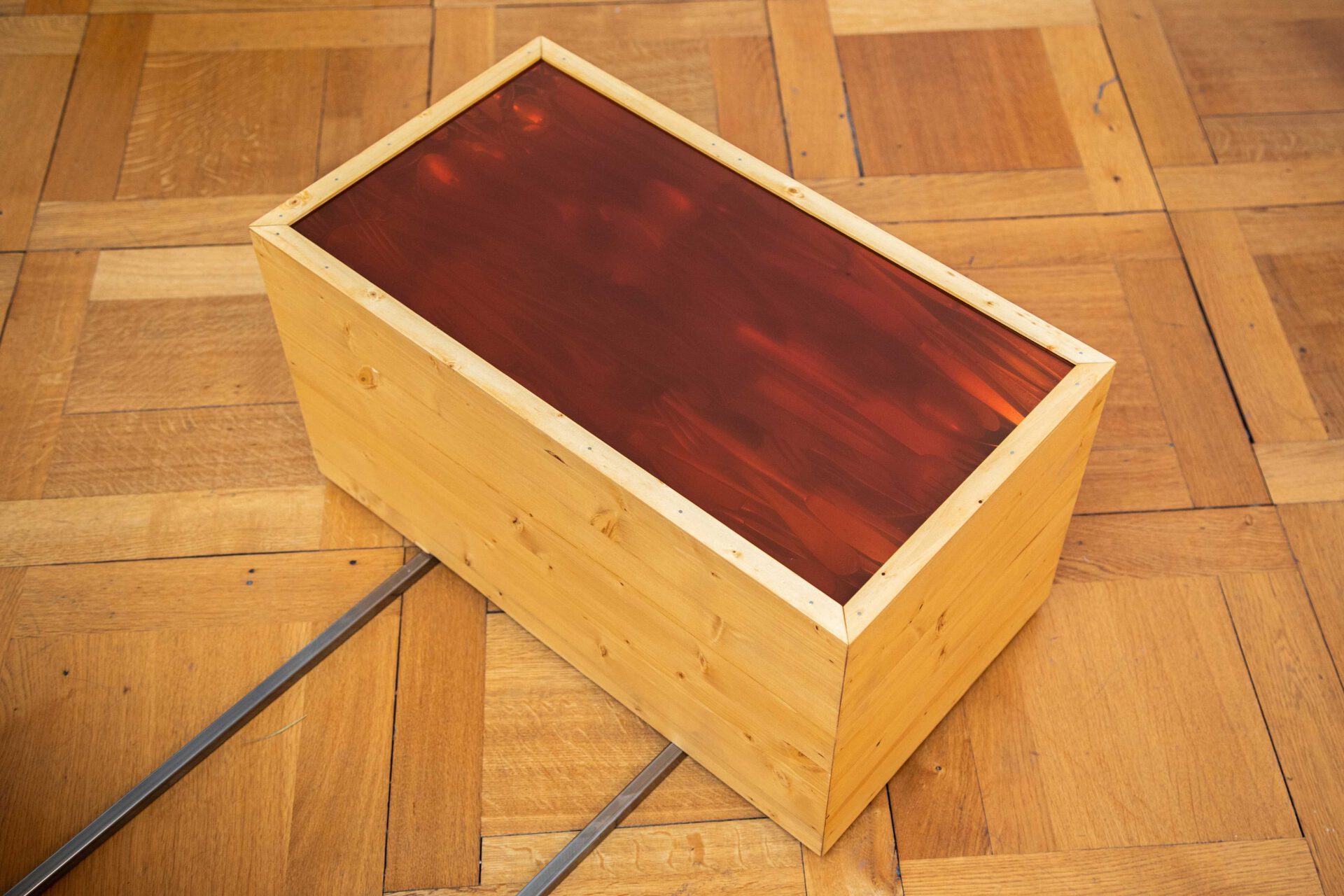
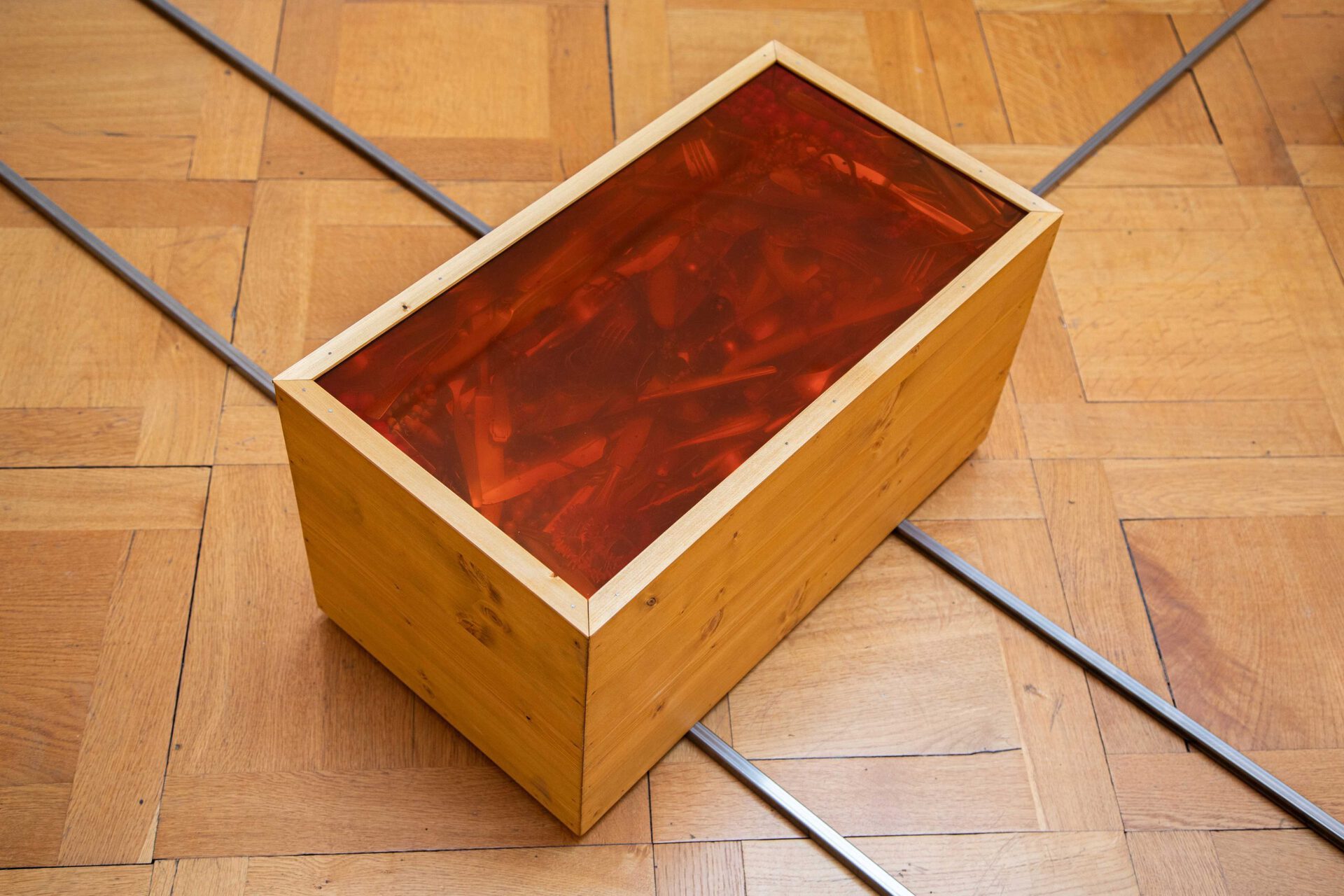
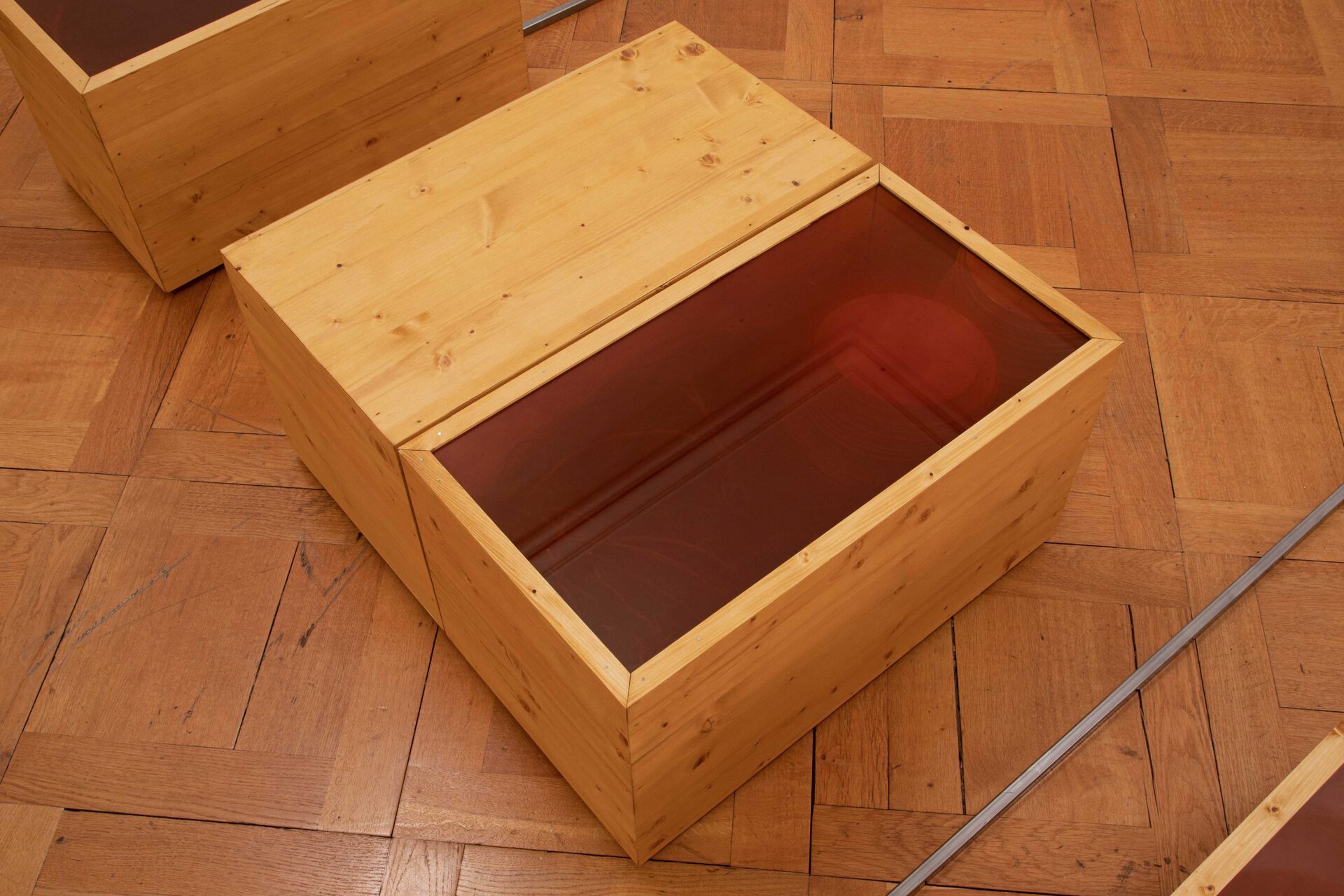
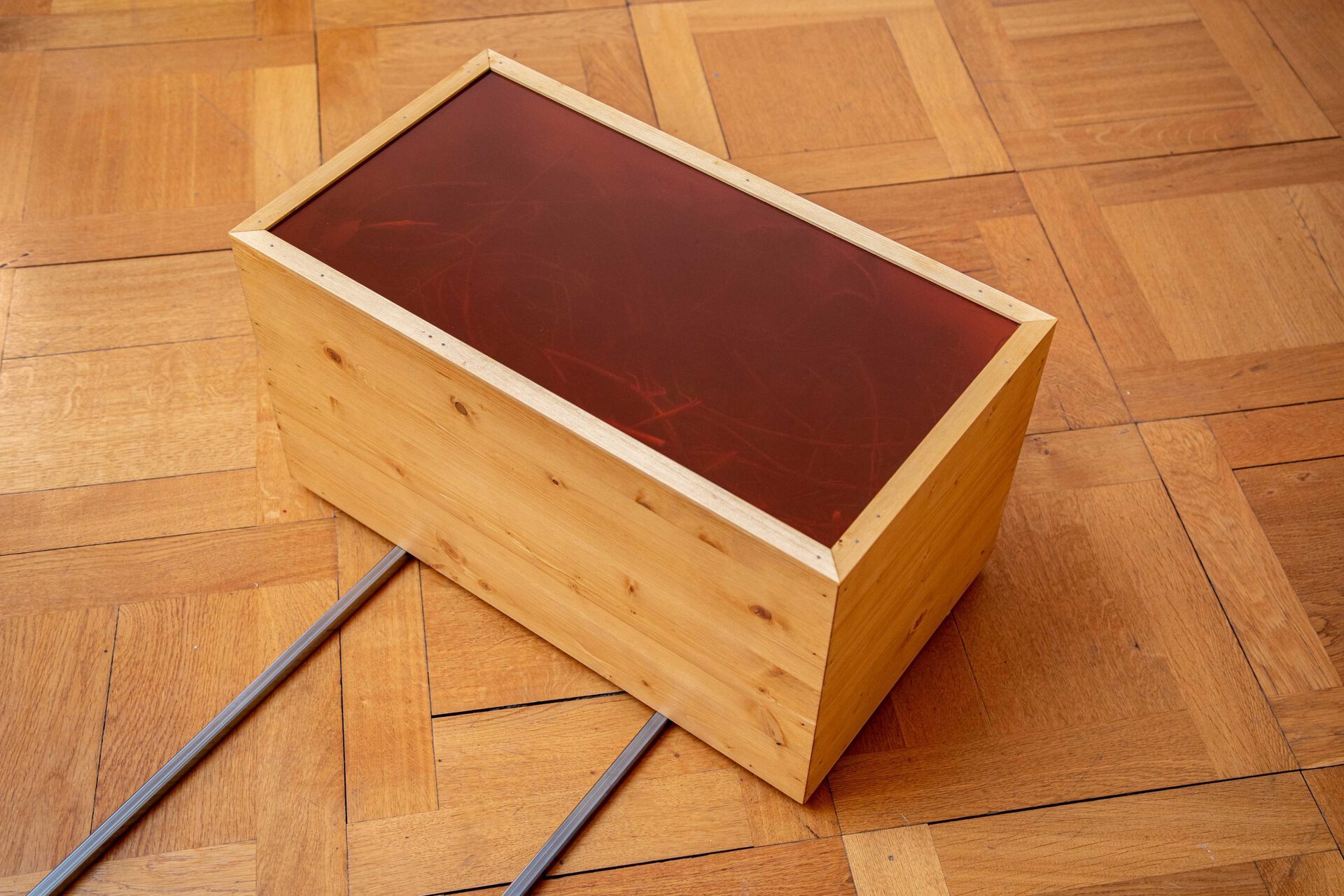
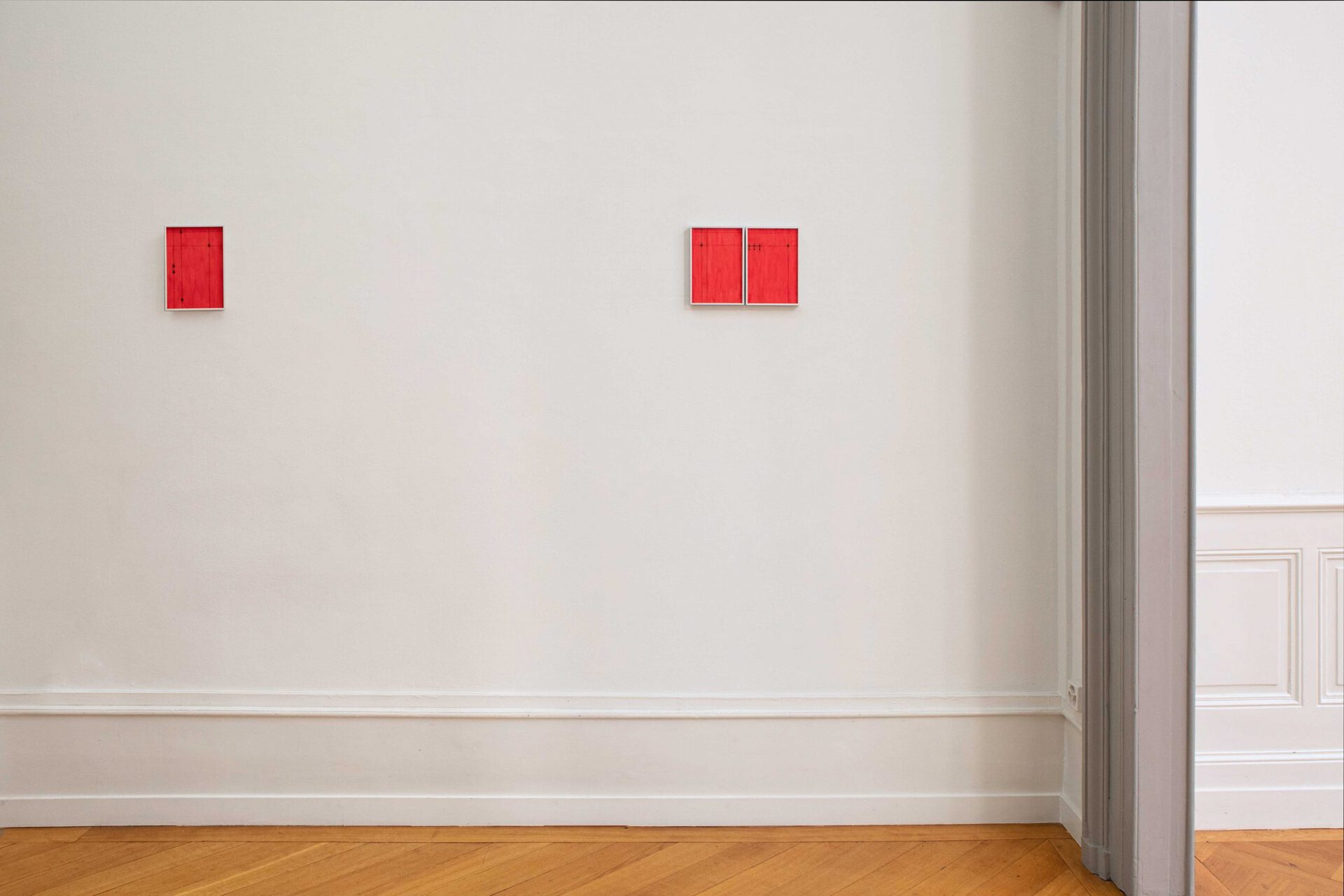
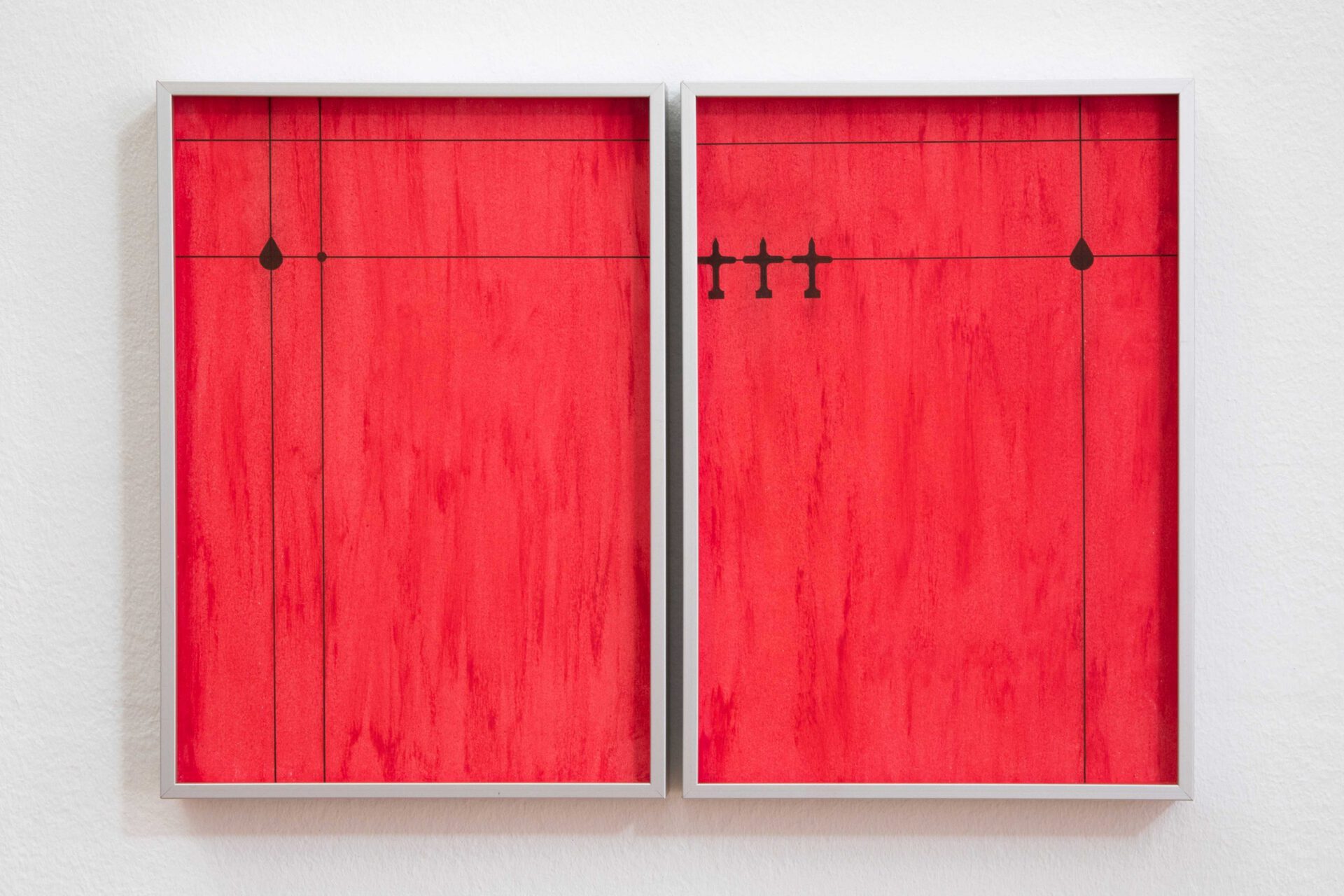



Location
Palais de l'Athénée / Salle CrosnierDate
19.05 –18.06.2021Photography
Paulo WirzText
Terreno Invisível [Invisible Ground]
O que eu quero é muito mais áspero e mais difícil: quero o terreno.
[What I want is much rougher and harder: I want the land.]
From Mineirinho, by Clarice Lispector
Paulo Wirz is originally from Brazil and moved to Switzerland at the age of 18, thus the conflicts of his homeland, a country that was born from a variable multiplicity of references and mixtures, seems to still inform his work. In the exhibition Terreno Invisível [Invisible Ground], the artist emphasizes the tension of a turbulent and deterritorialized game, which assembles on both the virtual and analogical levels of
memory, from an unprecedented range of works. Conceived especially for the Société des Arts de Genève, the three rooms encompass and reflect the artist's varied works – from a series of vivid red oil pastel drawings, to an installation covering the whole floor of the main exhibition room with wooden sculptures,to pieces of hundreds of modelling wax sculptures intertwined with elements of the venue’s architecture in the last room.
The artist's decision to name his works and exhibition in Portuguese, his mother tongue, is not incidental. "Terreno" carries the ambiguity of being both a noun and an adjective. A noun as a reference to a delimited geographical place, a parcel of soil where it is possible to build or demolish – it can be a property or abandoned, empty lot – or an adjective, which refers to what is mundane and human, as opposed to
the sublime. Also sometimes of multiple meanings, the titles of the presented works allude to notions related to water. Thus, through this invisible terrain we do not walk, but navigate while exploring possible cartographies of affections and memories.
The journey starts in the first room with Leito Estranho [Strange Riverbed]. The series consists of five smallformat oil pastel drawings. A lively and pulsating red pops up from a dense pictorial matter through the marks of a repetitive vertical movement, like the flow of a river. On the vibrant background, fine horizontal
and vertical black lines build a symmetrical structure that are base for four symbols, some geometric forms, and some of an uncertain nature, such as a plane that can be a crucifix, or a teardrop that can be a pendant. The figures are strategically positioned throughout the boards, either aligned or at their intersections. Two upper horizontal lines, present on all the drawings, indicate a connection between them, perhaps of an undefined land map or parts of a board game with no start nor end, or even a music score that is written with dissonant notes.
In the installation Foz [River Mouth], a set of thirty sculptures are positioned on a wireframe that lays over the floor of the main room, evoking a warehouse, where boxes are waiting to be moved, but also an electronic circuit that connects the different elements through the path of a power current. In this partially closed system, information, memories or imaginations flow in an undefined way and, despite the aspect of virtual instances, there is an insistence of a tangible world that builds itself on the ground which, albeit invisible, is analogue. By walking among the sculptures, the viewer’s gaze becomes that of an archaeologist, who tries to understand the past through the objects, records, and traces that inhabit each
box. On it, each of them is the size of a moving box, the ones used to carry belongings from one place to another. Some are open, others are closed by translucent coloured glass, and yet others are upside down. The translucent coloured glasses protect a profusion of household objects, once part of a communion that may have nourished bodies – old china plates, glasses, and cutlery – organized, grouped, or piled, sometimes into broken pieces. Organic matter collected from empty lots, like weeds and climbing plants, surrounds these memories, simultaneously involving and invading.
The visual effect of virtuality is created by the open sculptures, due to a game of mirrors lining the boxes from the inside that creates labyrinthine lines as they reflect themselves. The mirror allows fruition to occur between times, by managing to be utopia and heterotopia at the same time. A place without any place – the unreal, the virtual space – but that exists physically in geography, as a connection to the
illusion, or a present moment that contains the past and is constantly destroyed, becoming the future. This notion of space-time seems to be swallowed by a singular box that stands out, a black box with mirrors on its inner walls that reflect a burnt, dark bottom. Maybe an error within this maze-like circuit, as a powerless memory box that is no longer capable of saving any data. Perhaps a consequence and
effect of a frantic world where everything passes by the eyes, by the/our eyes, which cannot possibly absorb and store all the information.
In the last room, Beirão [Large Edge] is formed by hundreds of small modelling wax sculptures. Side by side, they form a necklace that surrounds the room and delineates a second territory, which alludes to a ritualistic and sacred space to renew experiences. This evokes the sentiment that Oswald de Andrade has long expressed in his Manifeso Antropófago, in search of a certain Brazilian authenticity: "Against
Memory, source of custom. Personal experience renewed."
Amidst the afflictions of the contemporary world, such as plagues and unwelcome bad omens, it is through the fissures of this measureless and unmapped land that we are allowed to go back and forth, place ourselves, and reimagine the world. It is the ground that allows the construction and destruction, as it is where new houses can be built. Though rough and difficult, as Clarice Lispector put it, and invisible to the eyes, it exists and coexists in all tenses allowing what was, is, and will be.
Giovanna Bragaglia